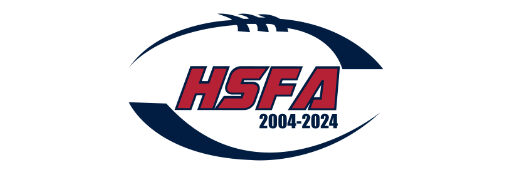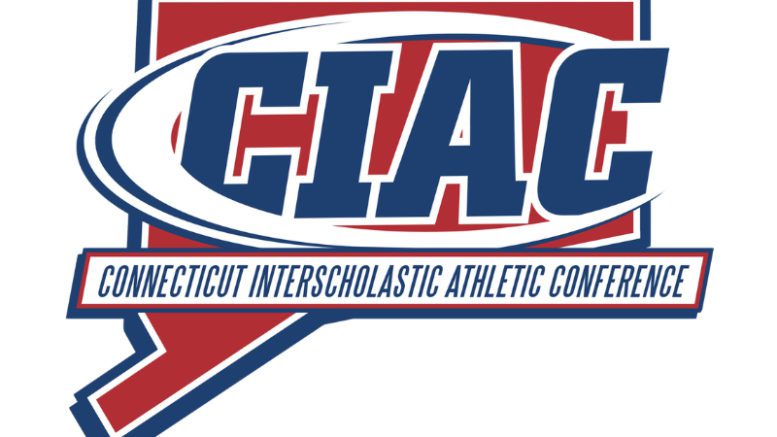There won’t be any tackle high school football in 2020. On Friday, the Connecticut Interscholastic Athletic Conference announced it was canceling full-contact football for the Fall.
The CIAC made its decision after the Connecticut Department of Public Health recommended that tackle football shouldn’t be played during the coronavirus pandemic.
The next questions is…what will happen next? Will the state move high school football to 2021 or will it consider non-contact? Vermont is considering playing 7-on-7 football, which doesn’t involve as much contact.
CIAC News Release
CHESHIRE, Conn. – At its September 3 meeting, the CIAC Board of Control reviewed DPH’s response to its August 28 letter requesting support of (1) modifications which lower the risk of indoor volleyball; (2) low to moderate risk activities in football; and (3) an opportunity to re-assess the viability high risk full contact football based on COVID metrics at the end of September or early October.
In its September 3 letter to CIAC, the DPH stated, “With regard to CIAC’s consideration of additional mitigation strategies for indoor girls’ volleyball and football that may lower their risks for person-to-person respiratory droplet spread, DPH has suggested that CIAC consider modifications to higher risk activities, and we continue to encourage such modifications. Absent such modifications, DPH is unlikely to support higher risk activities for the Fall term. We would also recommend that CIAC consult with your sports medicine committee before implementing significant changes to how high school sports are played in our state so that any potential unintended consequences of those changes (including increased risk of injury) can be fully vetted prior to implementation.”
In alignment with DPH’s recommendation to consult its sports medicine committee, the CIAC and its medical experts believe that the modification of wearing masks mitigates the risk expressed by DPH and provides a safe indoor environment for the sport of volleyball. As such, with the modification of players wearing masks indoors, the CIAC has aligned volleyball with DPH’s previous support of full team practice and game schedules for soccer, field hockey, cross country, and swimming.
In regard to football, the CIAC Board of Control has provided DPH with updated statements from the NFHS that reflect its position on 11 v 11 football and the success of other states that are currently playing full contact football. The CIAC also provided an updated timeline that reflected an opportunity to evaluate sufficient COVID data after an approximate 3 to 4 week return to school. Previously, the CIAC provided its position that COVID metrics continue to support the playing of high risk sports in Connecticut, as they have since July 6, and has emphasized the value that football provides its student-athletes from a physical, cognitive, social, emotional, and mental health standpoint. In doing so, the CIAC feels it has exhausted all possible scenarios in seeking DPH support for a full contact football experience this fall.
However, DPH has made it clear that it is “unlikely to support higher risk activities for the Fall term.” Given DPH’s position, the CIAC is obligated to provide its student-athletes, coaches, administrators, and superintendents with a clear direction on football activities that aligns with DPH recommendations. Without DPH support, the CIAC cannot move forward with a full contact season as it would place superintendents and boards of education in the impossible position of acting against the recommendation of a state agency.
As such, the CIAC Board of Control, in alignment with DPH recommendations, has determined that high risk full contact football is no longer a viable option. In alignment with DPH’s encouragement to consider modifications to higher risk activities, the CIAC will collaborate with athletic directors, coaches, and medical experts to provide football players with meaningful low to moderate risk fall activities.While the CIAC’s fall sports offerings are now aligned with DPH recommendations, it still stresses that progression to full team practices and moderate risk activities on September 21 and game play on October 1 is dependent on COVID metrics that support such activities. The CIAC will remain fluid in providing the safest experiences possible for our student-athletes and will continue to consider any future changes in DPH recommendations for fall sport activities.
Background Information Leading to CIAC’s September 3, Fall Sports Position
Since early March, the CIAC has met the challenges presented by COVID‐19 with a consistent focus on the physical, cognitive, social, emotional, and mental health of Connecticut’s student athletes. When necessary and appropriate, the CIAC canceled its winter championships and full spring season. On July 6, the CIAC returned its student‐athletes to structured conditioning programs that emphasized COVID mitigating strategies and reconnected kids with their coaches, peers, and school communities in meaningful experiences. On July 30, the CIAC approved its Official Fall Sports plan, which was developed in collaboration with a diverse representative group of educational, medical, and community leaders, reviewed by the ReOpen CT Rules Committee, and, included DPH consultation. After receiving a substantially different recommendation from DPH on August 13, the CIAC paused all activities while it worked with DPH to understand its position. On August 23, the CIAC received its next update from DPH which returned our student athletes to the conditioning and low‐risk non‐contact sport specific skill work that was part of the CIAC’s original Official Fall Sports Plan.
As stated in its August 23 update, “With the exception of girls’ volleyball and football, DPH agrees with your (CIAC’s) most recent proposed schedule for the start of full team practices and competitions. We also recommend coordination and collaboration at the district level given the potential variations in back to school plans across the state.” In that statement, the DPH supported the CIAC’s plan for full team practice to begin on September 21 and games beginning on October 1, providing positing COVID metrics, in the sport of cross country, soccer, field hockey, and girls swimming. In its August 23 update, the DPH also stated that, “For all the reasons we have discussed with CIAC previously, DPH does not recommend that full‐contact high school football or indoor girls’ volleyball be played during the upcoming fall season in our state.”
In regard to girls volleyball, DPH’s previous reason, as indicated in its August 13 letter, was that, “Although there is infrequent close contact between opposing players involved with this sport, the fact that activities for this sport are occurring indoors and involve significant physical exertion and forceful communication with teammates, the risk for person‐to‐person spread of infectious droplets is elevated for this specific sport.” DPH updated its guidance on August 23 and stated, “DPH encourages CIAC to work with their coaches, athletic directors, and board members to consider modifications to both girls’ volleyball and football that would allow them to be played consistent with the standards that define either “lower risk” or outdoor “moderate risk” sports as categorized by the National Federation of State High School Associations.” Furthermore, in its letter on August 23, the DPH indicated that gyms may be used for practice activities in compliance with the Department of Economic Community Development (DECD) sector rules.
In an August 28 response, the CIAC inquired whether DPH would support the play of indoor volleyball where all participants wear masks to be a mitigating strategy that addresses the concern of indoor moderate risk sports. The CIAC stressed that only low‐risk activities would take place in volleyball up to September 21, as is the case with all other fall sports. The CIAC would only move to moderate risk full team practices on September 21 if the COVID metrics were to support such activities. The CIAC would only move to moderate risk sport competition on October 1 if the COVID metrics were to support such activities. Throughout this progression, volleyball players would wear masks at all times while in the
gymnasium.
The DPH has cited the NFHS guidance on multiple occasions. The CIAC believed that its proposed mitigating strategy aligns with updated information provided to the CIAC by the NFHS. On August 27, the NFHS communicated that, “The phase‐in approach suggested in the NFHS Guidance has been followed by state associations; small cohorts in conditioning, then moderate risk practice and scrimmage situations; then games between teams that are ready.” Further, the NFHS stated, “State decisions are very aligned with COVID metrics… it seems that Connecticut’s metrics are excellent.”
The CIAC believes that wearing masks while playing volleyball mitigates DPH’s concern of indoor moderate risk sports and aligns with NFHS guidance. Additionally, the CIAC believes this strategy aligns with guidance issued by the Connecticut State Department of Education’s August 14 Addendum 7 guidance which identifies the use of a gym in consideration for general music, choral, and instrumental instruction. The CIAC believes that DPH’s concern of spreading air droplets via forceful verbal communication would also apply singing and the playing of musical instruments. If the use of face coverings, as required by Addendum 7, mitigates the risk of instructional activities in a gymnasium, the CIAC believes application of that same mitigating strategy applies to athletics.
In regard to football, DPH’s previous reason, as indicated in its August 13 letter, was that, “Full‐contact football is unique among the fall interscholastic sports in our state in its level of risk to student‐athletes for the person‐to‐person spread of infectious respiratory droplets. As you are aware, most of the collegiate conferences and many state high school interscholastic sport organizations have already postponed or canceled football for the upcoming season. DPH updated its guidance on August 23, and stated, “DPH encourages CIAC to work with their coaches, athletic directors, and board members to consider modifications to both girls’ volleyball and football that would allow them to be played consistent with the standards that define either “lower risk” or outdoor “moderate risk” sports as categorized by the National Federation of State High School Associations.”
In response, on August 28, the CIAC requested the following support from DPH pertaining to the sport of football:
1. Would DPH support football engaging in low‐to‐moderate risk activities after September 21, if supported by COVID metrics that would permit sports such as soccer and field hockey to proceed in that manner? The CIAC will work with member school coaches and athletic directors to design low‐to‐moderate risk activities during the time frame of August 29 through September 21. Through that process, the CIAC will vet the appropriateness of the 7 v 7 option recommended by DPH as a possible moderate risk football activity. In doing so, the CIAC would like to clarify the NFHS’s position on 7 v 7 football, as DPH has consistently referenced NFHS guidance. In a communication to the CIAC on August 27, , the NFHS stated, “The NFHS Guidance for Returning To Activity document that was shared with state associations suggested three tiers of “risk” and examples of sports that might be placed in each category. 7 v 7 football was listed as an example in the “moderate risk” category. The NFHS was not suggesting that states should play 7v7 football instead of 11‐player football. It was only listed as an example of an activity that occurs in some states at the high school level. The NFHS does not write rules for 7v7 football, and there are no NFHS member state championships for 7v7 football. No other state association is playing 7v7 football as a championship program.”
2. Would DPH support reevaluating the COVID metrics with the CIAC at the end of September or early October to determine whether it would be appropriate for high‐risk interscholastic sport activities to take place at that time? During our conversation on August 20, , it was mentioned by DPH that it was concerned with the negative impact activities such as the reintroduction of low‐to‐moderate risk sports on June 17, the allowance of high‐risk sports on July 6, July 4th celebrations, and graduation events would have on Connecticut COVID metrics. However, Connecticut’s metrics remained positive following the allowance of each of those activities. Likewise, if the return to on‐campus learning does not produce the negative impact to Connecticut’s COVID metrics that many experts believe it will, the CIAC is requesting the DPH to revisit its position on high‐risk interscholastic sports at a later date. The CIAC’s request is informed by the NFHS’ August 27 update, which stated, “Multiple states have staged interscholastic contests in football with precautionary measures in place. Reports to us thus far have been positive. State decisions are very aligned with COVID metrics… it seems that Connecticut’s metrics are excellent.”
The CIAC believes our plan for football and volleyball is safe and logical, and follows a progression determined by COVID medical science while supporting the physical, social, emotional, cognitive, and mental health needs of student‐athletes.
On September 3, DPH responded to the CIAC’s support request in a letter that stated, “With regard to CIAC’s consideration of additional mitigation strategies for indoor girls’ volleyball and football that may lower their risks for person‐to‐person respiratory droplet spread, DPH has suggested that CIAC consider modifications to higher risk activities, and we continue to encourage such modifications. Absent such modifications, DPH is unlikely to support higher risk activities for the Fall term. We would also recommend that CIAC consult with your sports medicine committee before implementing significant changes to how high school sports are played in our state so that any potential unintended consequences of those changes (including increased risk of injury) can be fully vetted prior to implementation.”
Based on DPH’s September 3 letter, and in collaboration with its medical experts, the CIAC believes the modification of wearing masks mitigates the risk expressed by DPH and provides a safe indoor environment for the sport of volleyball.
In regard to football, DPH’s September 3 letter provides no support for the CIAC to continue preparing for a full contact season. In its latest letter, it is clearly stated that, “DPH is unlikely to support higher risk activities for the Fall term.” As such, the CIAC feels it has provided the DPH with the most up to date NFHS guidance and exhausted all possible scenarios to provide Connecticut student‐athletes with a full contact football experience. Without DPH support, the CIAC cannot move forward with a full contact season as it would place superintendents and boards of education in the impossible position of acting against the recommendation of a state agency. The CIAC, in alignment with DPH guidance, will now work with its dedicated athletic directors and football coaches to provide football players with the best low and moderate risk experiences possible.







